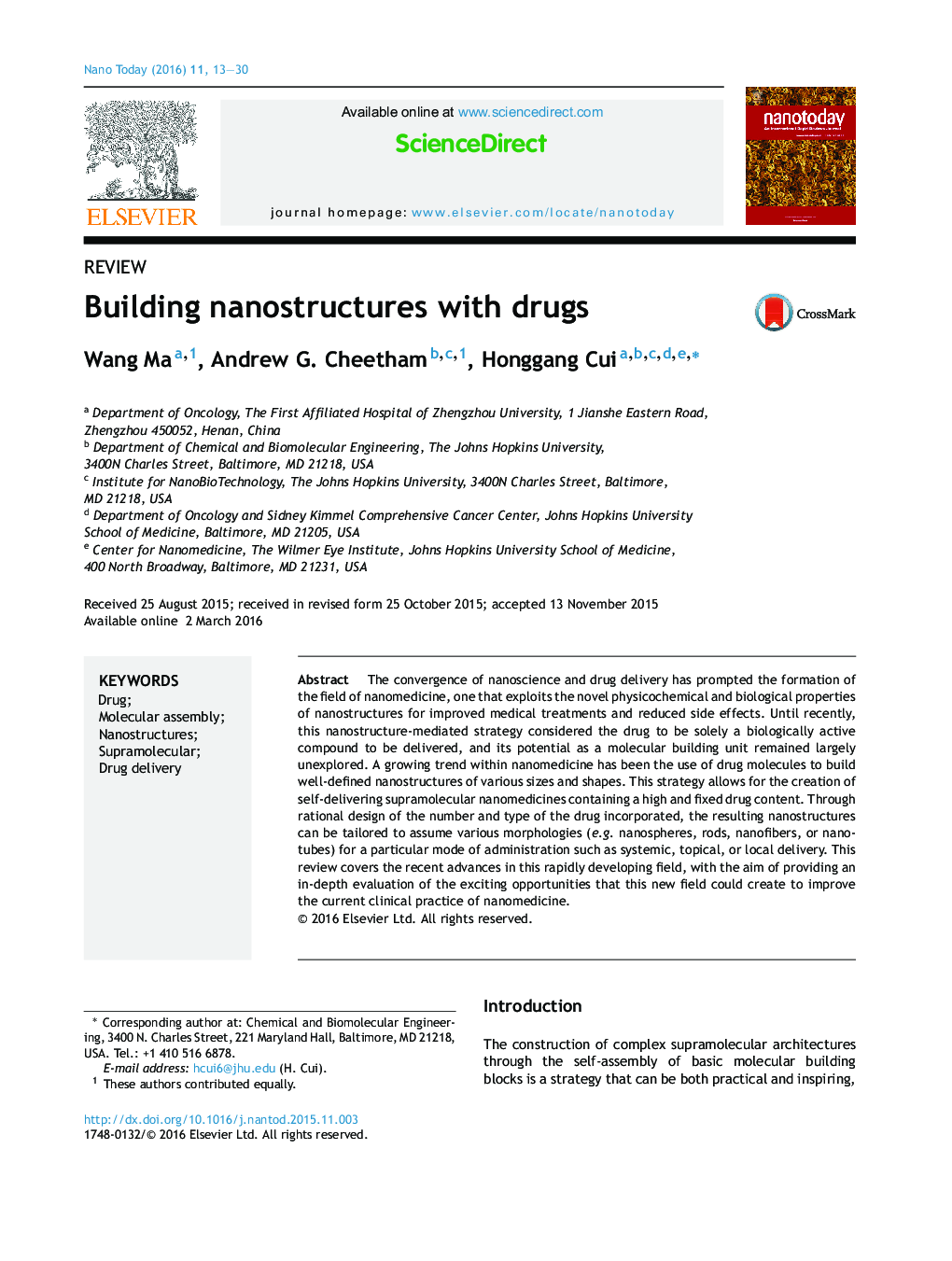| Article ID | Journal | Published Year | Pages | File Type |
|---|---|---|---|---|
| 32031 | Nano Today | 2016 | 18 Pages |
•Drug molecules can serve as molecular building units for self-assembly into well-defined supramolecular nano-objects.•Drug-containing nanostructures can be made with high and fixed drug content.•Morphology can be tailored to a particular route of administration—topical, local or systemic.•The strategy provides enormous potential for more effective and economic therapeutic treatments.
The convergence of nanoscience and drug delivery has prompted the formation of the field of nanomedicine, one that exploits the novel physicochemical and biological properties of nanostructures for improved medical treatments and reduced side effects. Until recently, this nanostructure-mediated strategy considered the drug to be solely a biologically active compound to be delivered, and its potential as a molecular building unit remained largely unexplored. A growing trend within nanomedicine has been the use of drug molecules to build well-defined nanostructures of various sizes and shapes. This strategy allows for the creation of self-delivering supramolecular nanomedicines containing a high and fixed drug content. Through rational design of the number and type of the drug incorporated, the resulting nanostructures can be tailored to assume various morphologies (e.g. nanospheres, rods, nanofibers, or nanotubes) for a particular mode of administration such as systemic, topical, or local delivery. This review covers the recent advances in this rapidly developing field, with the aim of providing an in-depth evaluation of the exciting opportunities that this new field could create to improve the current clinical practice of nanomedicine.
Graphical abstractFigure optionsDownload full-size imageDownload high-quality image (100 K)Download as PowerPoint slide
